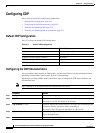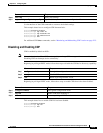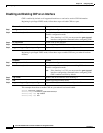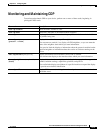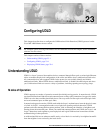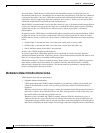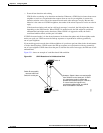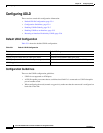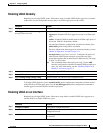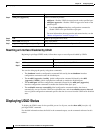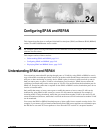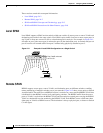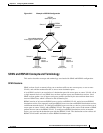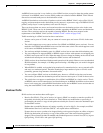
23-3
Cisco ME 3400 Ethernet Access Switch Software Configuration Guide
78-17058-01
Chapter 23 Configuring UDLD
Understanding UDLD
• Event-driven detection and echoing
UDLD relies on echoing as its detection mechanism. Whenever a UDLD device learns about a new
neighbor or receives a resynchronization request from an out-of-sync neighbor, it restarts the
detection window on its side of the connection and sends echo messages in reply. Because this
behavior is the same on all UDLD neighbors, the sender of the echoes expects to receive an echo in
reply.
If the detection window ends and no valid reply message is received, the link might shut down,
depending on the UDLD mode. When UDLD is in normal mode, the link might be considered
undetermined and might not be shut down. When UDLD is in aggressive mode, the link is
considered unidirectional, and the port is disabled.
If UDLD in normal mode is in the advertisement or in the detection phase and all the neighbor cache
entries are aged out, UDLD restarts the link-up sequence to resynchronize with any potentially
out-of-sync neighbors.
If you enable aggressive mode when all the neighbors of a port have aged out either in the advertisement
or in the detection phase, UDLD restarts the link-up sequence to resynchronize with any potentially
out-of-sync neighbor. UDLD shuts down the port if, after the fast train of messages, the link state is still
undetermined.
Figure 23-1 shows an example of a unidirectional link condition.
Figure 23-1 UDLD Detection of a Unidirectional Link
TX
TX
RX
RX
Switch A
Switch B
Switch B successfully
receives traffic from
Switch A on this port.
98648
However, Switch A does not receive traffic
from Switch B on the same port. If UDLD
is in aggressive mode, it detects the
problem and disables the port. If UDLD is
in normal mode, the logical link is
considered undetermined, and UDLD
does not disable the interface.




